SEO is a History Book. Welcome to the GEO Era.
Your SEO playbook just became obsolete. This no-bull guide lays out how to adapt to Generative Engine Optimization (GEO)—the future of search, content, and digital strategy.
→ Read Article
You know the feeling. Here’s what comes next.
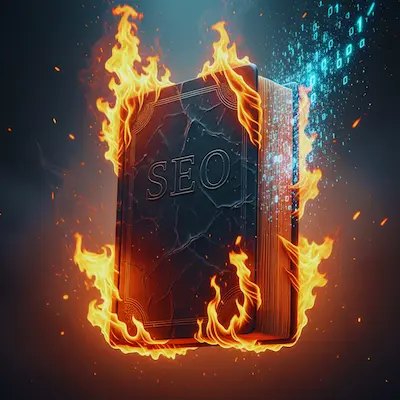
Generative engines don’t crawl.
They think.
If your content isn’t feeding that thought, you’re invisible.
For years, we optimized for machines. Keywords. Backlinks. Crawlers. But machines evolved.
Now, they read, reason, and rank based on relevance—not just signals. The old playbook? It’s obsolete.
Because we trained it to chase structure, not sense. Generative engines, on the other hand, demand understanding.
“Your next ranking signal isn’t a backlink. It’s how well your content teaches the AI.”
It means content must serve as structured knowledge, not just stuffed pages. Think nodes, not narratives.
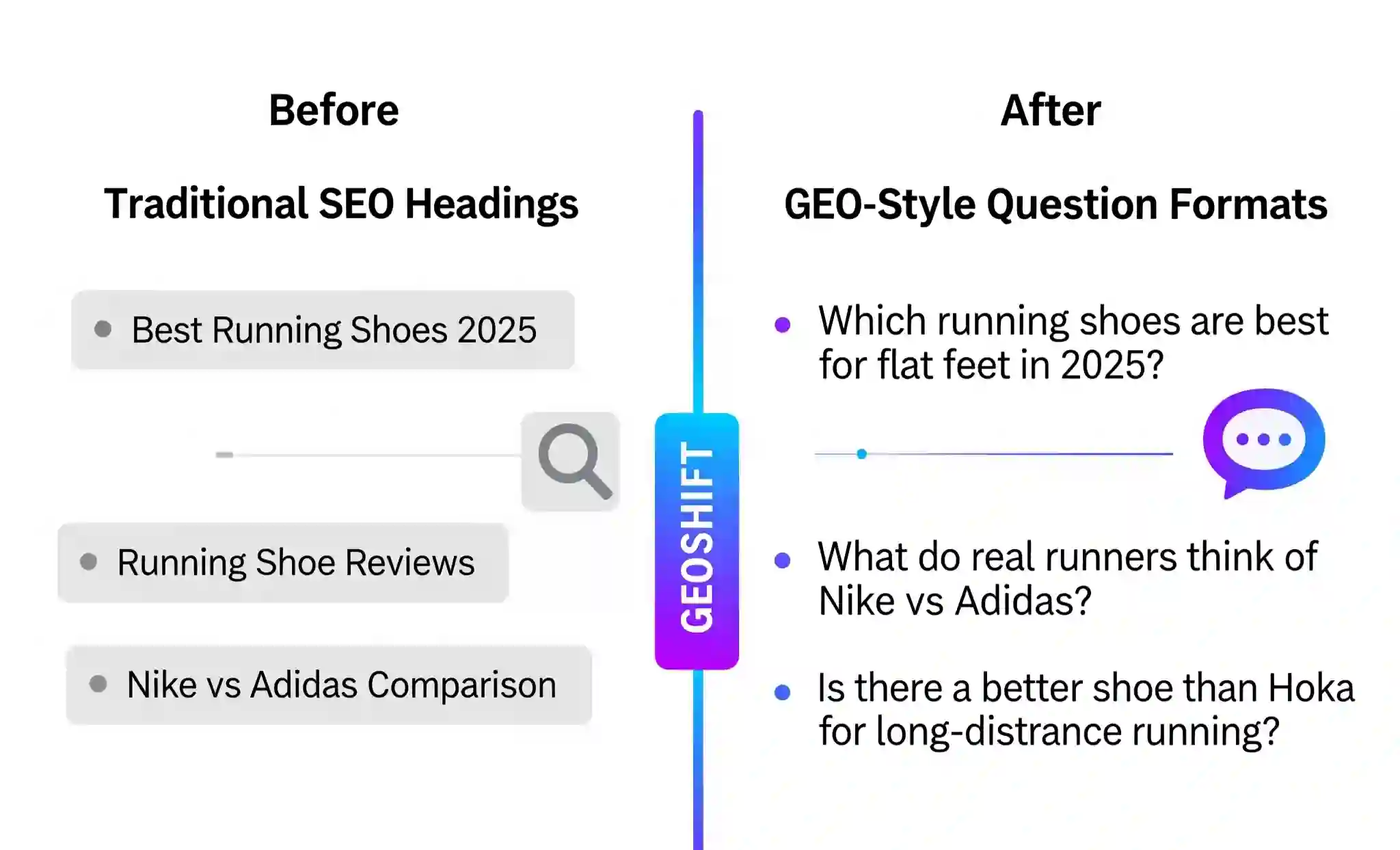
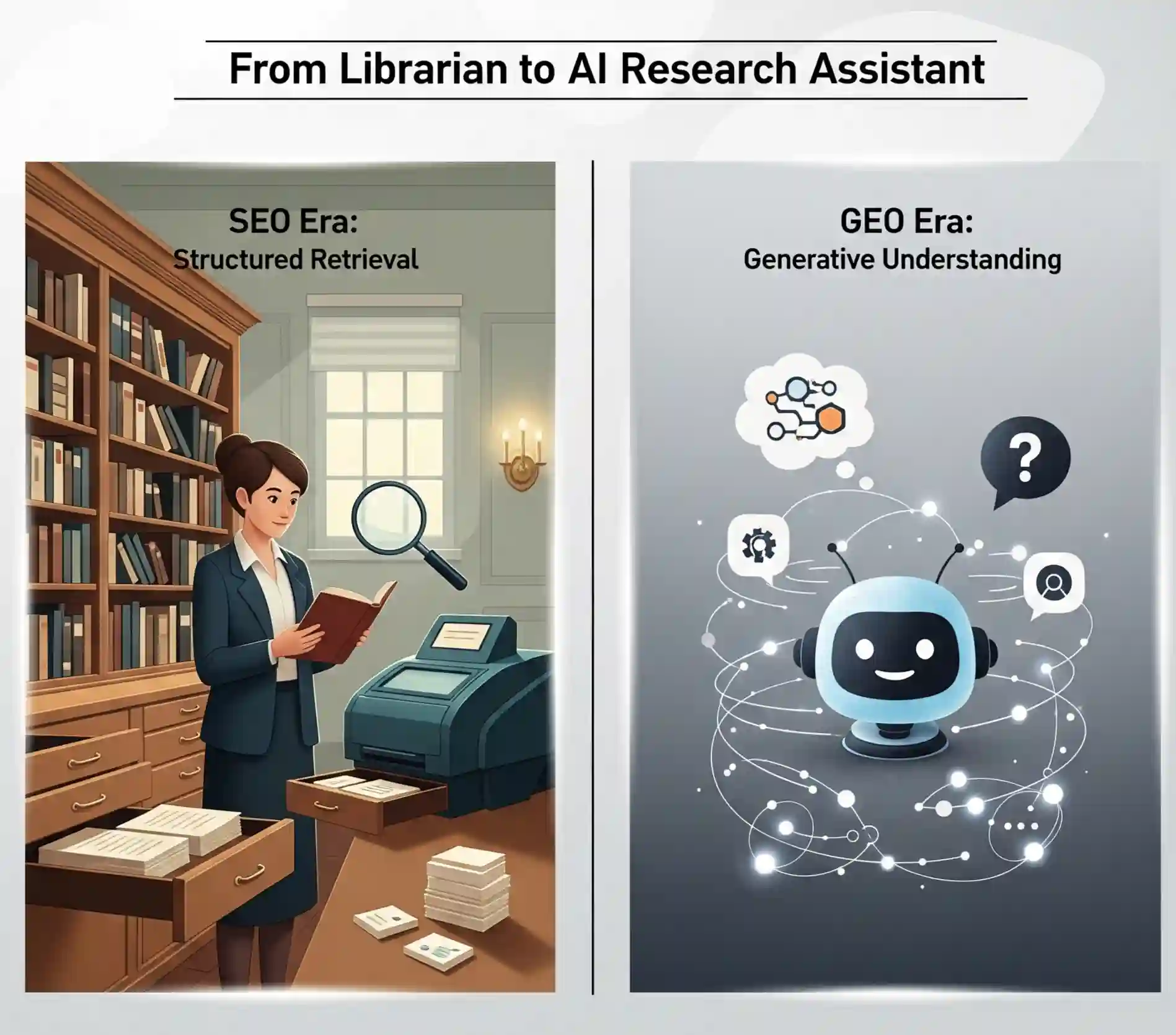
It’s that quiet moment, maybe late on a Tuesday afternoon, when you open up your analytics dashboard. You’re not even sure what you’re looking for, really. You just want to see that familiar, comforting upward trend.
But lately, it’s not there. Instead, there's a flatness. A plateau. Or worse, a gentle, almost imperceptible, downward slope.
A knot forms in your stomach. It’s a feeling of quiet dread, the kind you get when you hear a strange noise in your car’s engine. You tell yourself it’s just a blip. A seasonal trend. A Google algorithm update that’ll shake out.
But deep down, you know it’s something else. You can feel the ground shifting beneath your feet, but you can't see the fault line.
The ground isn't just shifting; a chasm is opening up right under the foundations of everything we've built in digital marketing for the last twenty years.
I’m here to tell you that the fault line has already cracked open. That engine noise isn’t a minor issue; the engine has been swapped out, and no one gave you the new owner's manual.
For two decades, we all played the same game: The Great Google Climb. We wrote articles, we chased backlinks, we optimized for keywords, all in service of one goal: getting to the top of that list of ten blue links. It was our entire world. It was predictable. It was, in its own way, comfortable.
That world is gone.
Today, when someone asks a question—on Google, in ChatGPT, in a dozen new AI tools—they don't get a list of links. They get an answer. A direct, conversational, synthesized summary written on the fly by an artificial intelligence that has read more of the internet than you could in a thousand lifetimes.
This isn’t a test run. This isn't a beta feature. This is the new reality, and it's taking over with breathtaking speed.
For the companies and marketers still clutching their old SEO playbooks, this is an extinction-level event.
It’s a tidal wave of change that will wash away those who are too slow, too stubborn, or too nostalgic to see it coming.
But for you? For the ones who are paying attention? This is the single biggest opportunity you will get in your entire career. It's a hard reset. A chance to leapfrog the behemoths who are stuck in their old ways. It’s a chance to stop playing a crowded game of inches and start dominating a wide-open new field.
So, if you’re ready to stop being anxious about the future and start building it, stick with me. We’re going to toss that old history book in the fire and write the first chapter of the new playbook. The one where you become the source of truth the machines can't live without.
Old tactics fade
SEO optimized for links and keywords is no longer enough.
Shift to generation
Search engines now synthesize answers—not just rank results.
AI takes top spot
AI Overviews dominate the first impression—content must adapt.
Win the citation
Credibility now comes from being quoted by AI—not just clicked.
To win the new game, you have to understand how profoundly the rules have changed. This isn't just a new version of the software; it's a completely different operating system for how humans find information.
For as long as most of us have been working, Google was the world’s most efficient librarian. You'd walk up to the giant search bar—the front desk—and give it your query. "I'm looking for books on ancient Rome."
Your job, as an SEO expert, was a mix of publisher and publicist.
The librarian wouldn't give you the answer. It would point you to an aisle, giving you a neatly organized shelf of ten books (the search engine results page, or SERP) that it believed were the most relevant. Your job, as an SEO expert, was a mix of publisher and publicist. You had to make sure your book had a great cover (title tag), a compelling summary (meta description), and plenty of citations from other respected books (backlinks). Your goal was to convince the librarian to put your book at eye-level on that first shelf.
The entire model was based on navigation. It was about pointing people in the right direction.
That librarian has been promoted, retired, or otherwise rendered obsolete. In their place now sits a brilliant, hyper-efficient research assistant. This isn't someone who just points you to the right aisle. This is someone you can give a complex task to:
You: "Hey, I need a five-page report on the key factors that led to the fall of the Roman Empire, focusing on economic instability and military overspending."
AI: [Writes new, original answer based on 10 sources — in 3 seconds.]
This is the fundamental shift from navigation to generation. Search engines are no longer just directories of information; they are creators of answers.
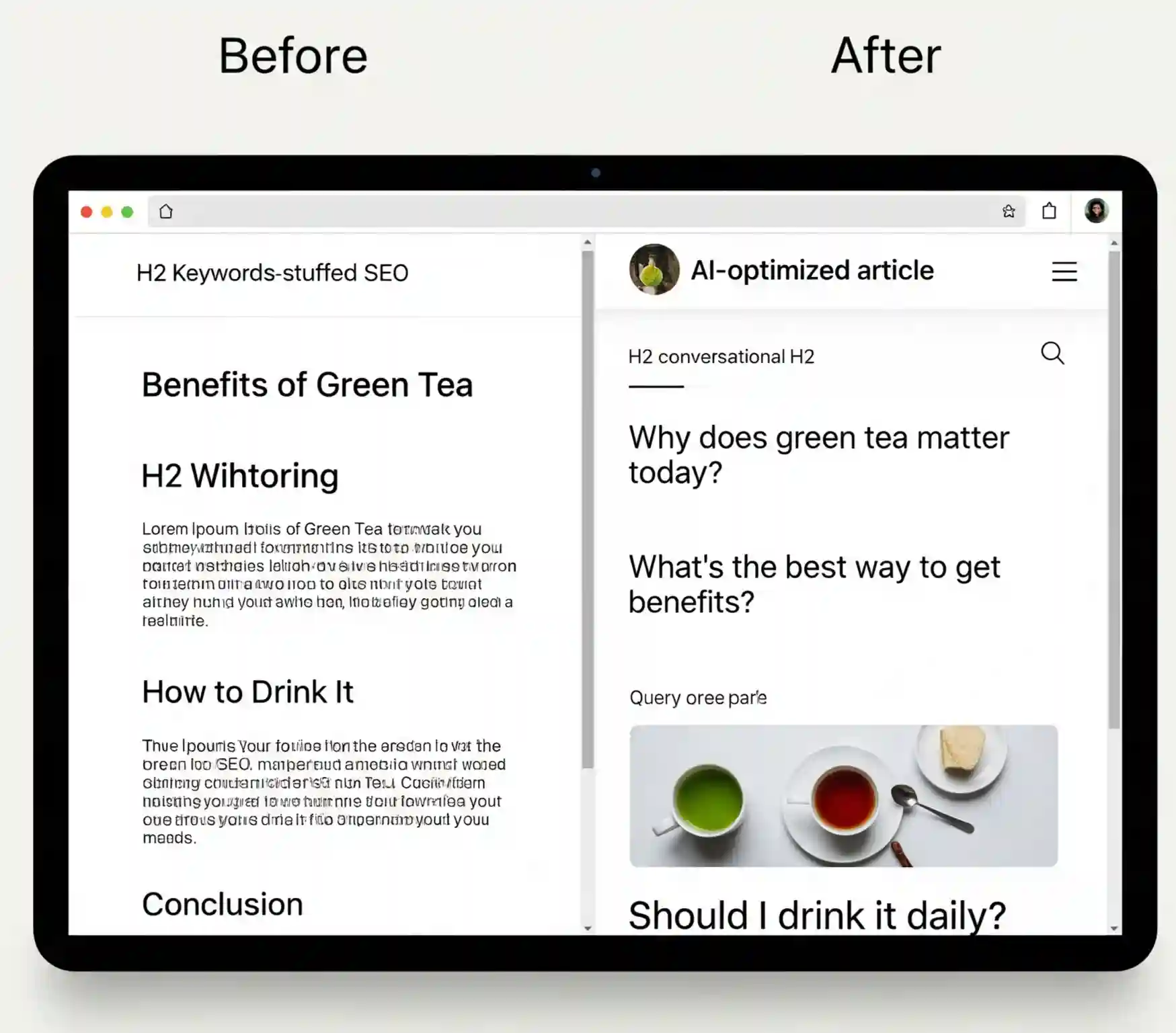
But inside that last point lies the key to the entire kingdom. Credit. Attribution. The citation at the bottom of the AI-generated report.
The game is no longer about winning the click. It's about winning the citation.
When an AI, perceived by the user as an objective synthesizer of truth, says, "According to [Your Brand]," that is an endorsement more powerful than any #1 ranking ever was. It positions you not as an option for the user to investigate, but as a foundational ingredient of the correct answer.
SEO is splintering
Top-ranking formats are now splattered across platforms and UIs.
Search is unbundling
Google isn’t the only discovery layer anymore—AI Overviews, forums, TikTok, and ChatGPT are all surfacing answers.
Linear funnels break
Generative engines jump directly to solutions, skipping your carefully built UX path.
Queries are evolving
Instead of static terms, users ask dynamic questions that require synthesized, contextual answers.
We've all been trained to think in terms of SEO—Search Engine Optimization. The very name implies we are trying to "optimize" or "game" a system. It's a reactive posture. It's time to throw the acronym, and the mindset, away.
The new discipline is GEO—Generative Engine Optimization.
This isn't just semantics. It's a fundamental shift in philosophy. Let me put it another way.
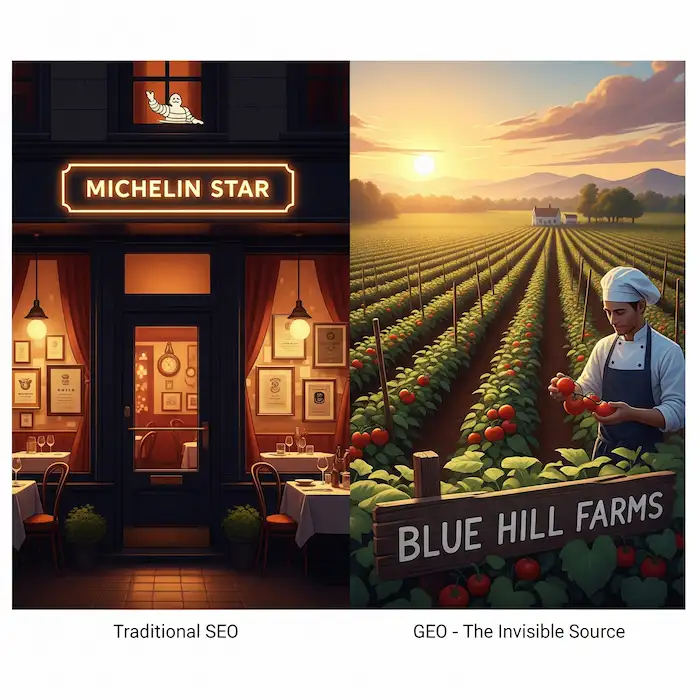
SEO was like getting your restaurant a fantastic review in the Michelin Guide. The goal of the review was to entice people, to convince them that your establishment was worth a visit. You’d frame the review, put it in your window, and hope it drove foot traffic. You were a destination.
GEO is like becoming the exclusive, organic farm that supplies the produce for a three-star Michelin restaurant. Your name isn't on the sign out front. But on the menu, next to the signature dish, it says, "with sun-ripened tomatoes from Blue Hill Farms."
In the first scenario, you're one of many great choices. In the second, you are synonymous with quality. You are the source. The chef relies on you to create their magic. You are not just in the guide; you are part of the very fabric of excellence that the guide seeks to recognize.
That’s the difference. GEO isn't about tricking an algorithm. It's about structuring your knowledge and proving your expertise so profoundly that the generative engines must rely on you to provide a credible answer.
This doesn't mean you can forget the basics. A slow website or a shoddy mobile experience is like having a dirty kitchen. It immediately disqualifies you. But the core strategy, the very soul of your content creation, has to evolve from being a destination to being a source.
“The future of search isn’t ten blue links—it’s verified, structured knowledge that LLMs can trust at scale.”
— Rand Fishkin, co-founder of SparkToro
“It’s time to stop optimizing for clicks—and start structuring for answers.”
Okay, enough philosophy. Let's get our hands dirty. This is the practical, step-by-step guide to rebuilding your content strategy around the principles of GEO. It comes down to three core pillars.
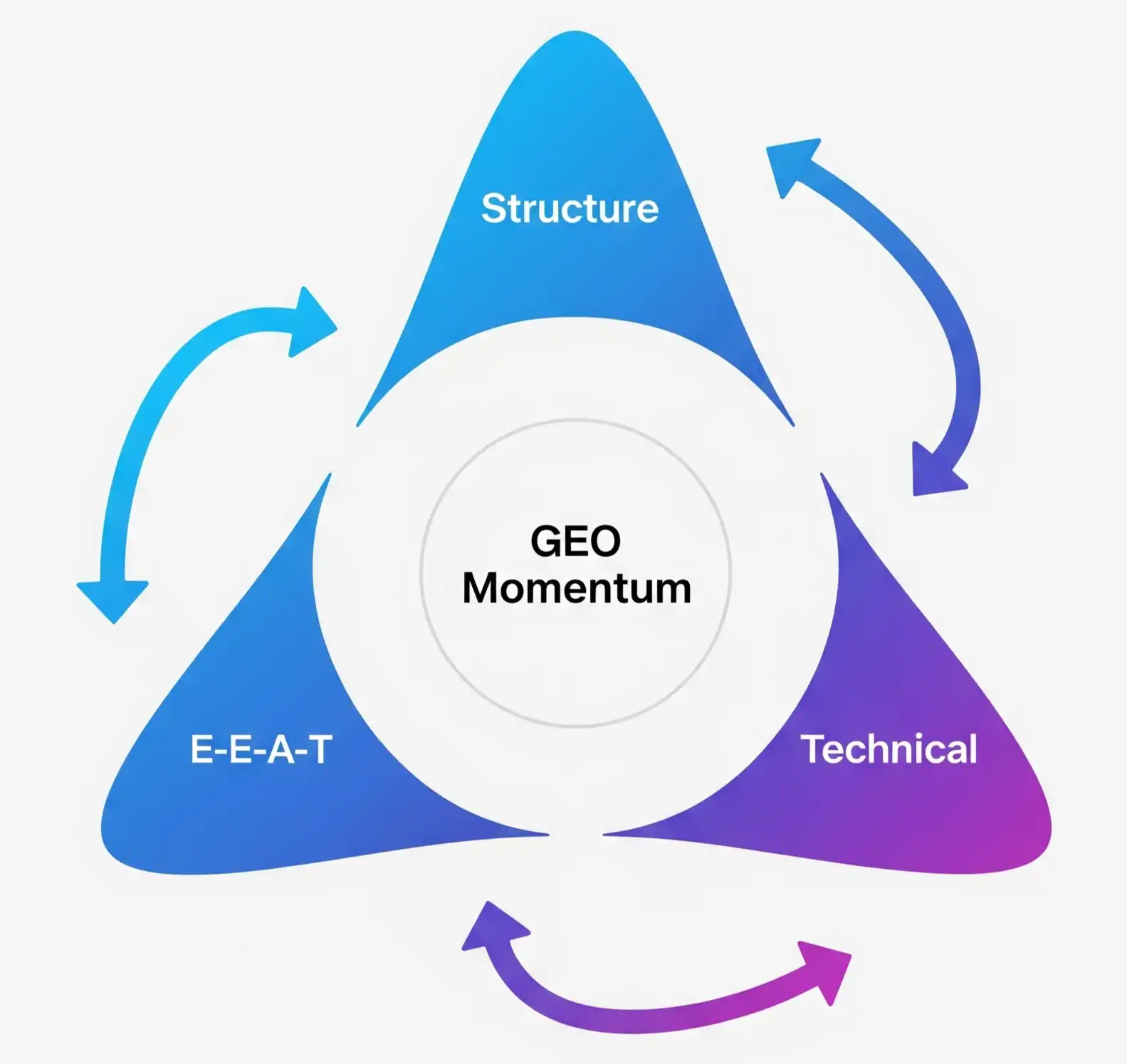
You have to fundamentally change the way you think about a "page" of content. It's no longer a linear article. It's a database of answers. Your job is to make it incredibly easy for a machine to find and extract those answers.
Wage War on Vague Headings. Go through your top 20 articles right now. I guarantee your subheadings (your H2s and H3s) say things like "Key Features," "Benefits," "Our Process," or "Final Thoughts." This is corporate-speak, and it's useless to an AI. An AI is looking for a direct match to a user's query. You need to transform every single heading into the exact question a human would ask.
Instead of: "Key Features"
Do This: "What Are the Core Features of the new MacBook Air M3?"Instead of: "Implementation Strategy"
Do This: "What Is the Step-by-Step Process for Implementing HubSpot Marketing Hub?"
Give Away the Punchline Immediately. We were all taught to build suspense, to guide the reader on a journey. Forget it. The AI doesn't have time for your journey. Right under your main title, create a highlighted box or a bolded paragraph. Call it "The Bottom Line," "The Short Answer," or "Key Takeaways." In 40-60 words, summarize the entire article's conclusion. This is the single easiest piece of text for an AI to grab for an AI Overview. You're literally handing it the answer on a platter.
Become a Question Detective. Your new keyword research process is less about search volume and more about human curiosity. Spend your time in the trenches where real people ask questions:
The internet is about to be hit by a tsunami of cheap, generic, AI-generated content sludge. In this new world, proving your humanity isn't just a nice-to-have; it's your single greatest competitive advantage. Google's E-E-A-T (Experience, Expertise, Authoritativeness, Trustworthiness) framework is the blueprint.
This is so important, we need to break it down piece by piece.
This is the newest and perhaps most important signal. It’s about proving you have real, first-hand, boots-on-the-ground experience with what you're talking about.
How to Show It: Use first-person narratives. "When I tested this software, I ran into a major bug with the reporting feature..." is infinitely more valuable than a generic list of features. Include original photos and videos of you actually using the product or performing the service. Create detailed case studies with real data. If you’re reviewing hiking boots, show pictures of them caked in mud on a real trail, not a stock photo.
Expertise is about demonstrating your knowledge. It’s about credentials and depth.
How to Show It: This is where author bios become critical. Don't let your content be published by "Admin" or "The Marketing Team." Every article needs a real author, with a detailed bio explaining why they are qualified to talk about this topic. Are they a certified professional? Did they work in the industry for 20 years? Do they have a relevant degree? Link their name to their LinkedIn or a dedicated author page on your site. Go deep in your content. Don't just skim the surface; create the most comprehensive resource on the topic you can.
Authoritativeness is about your reputation within your industry. It's about external validation.
How to Show It: This is where traditional PR and digital PR come in. Are you or your experts being quoted in major publications? Are you speaking at industry conferences? Have you won any awards? Are other recognized authorities in your field linking to your work? Every time this happens, it reinforces to Google that you are not just a self-proclaimed expert, but one that the community recognizes.
Trust is the foundation of it all. It’s about being legitimate, transparent, and accountable.
How to Show It: This is the "boring" stuff that most people skip. Have a clear and easy-to-find "Contact Us" page with a real address and phone number if possible. Have a detailed "About Us" page that tells the story of your brand. Maintain clear privacy policies and terms of service. Cite your sources and link to the original data. And crucially, keep your content updated. A "Last Updated" date at the top of your articles is a massive trust signal that tells users and AI alike that you are maintaining the accuracy of your information.
Your content can be brilliant, but if it's locked in a format the AI can't easily parse and understand, it might as well not exist. This is where you do the technical work to make your expertise legible to a non-human reader.
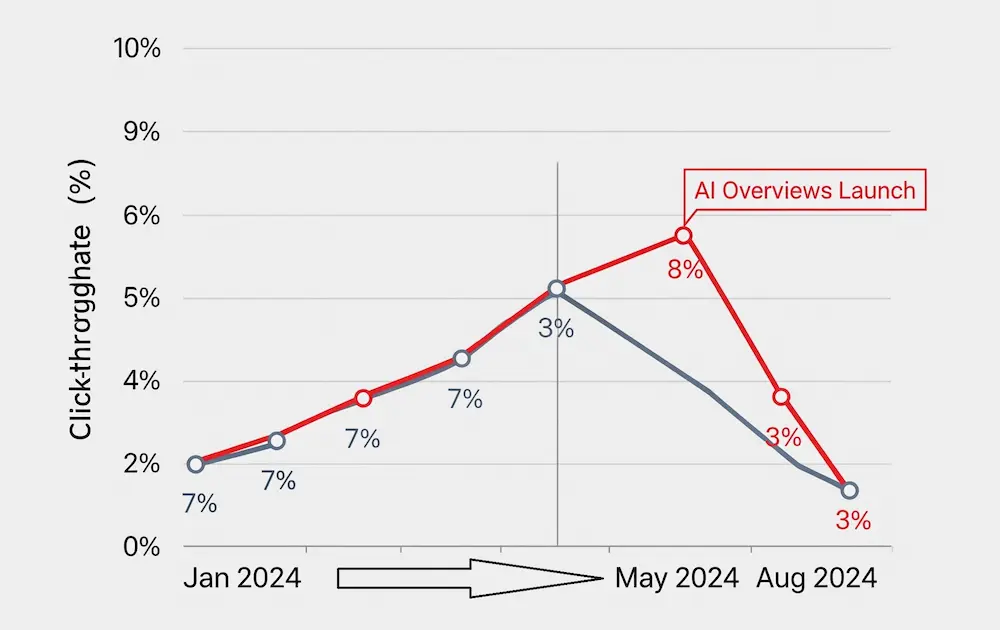
CTR is no longer your moat. Here's how AI Overviews are stealing the first click.
This is all happening right now, but the pace of change is only accelerating. The GEO strategies you implement today are the foundation for what's coming next.
Soon, we won't just "search." We will deploy personal AI agents to accomplish tasks. "Hey, find me the best-rated coffee maker under $200 that has a built-in grinder and can be programmed from my phone. Compare the top three options, summarize their pros and cons, find the best price, and order it for me." Your product pages need to be structured databases of information, ready to be queried by these agents.
The search box is already dissolving. Soon, queries will be a mix of text, images, and voice. A user will take a picture of their wilting houseplant and ask, "What's wrong with this, and what specific product do I need to fix it?" Brands that have rich, well-described visual content paired with expert textual explanations will be the only ones that can answer.
As AI gets to know us better, answers will become hyper-personalized. My AI-generated answer for "best vacation spots" will be completely different from yours, based on our past travel, budgets, and preferences. This means the future of content is in creating a rich tapestry of detailed, nuanced information that can be remixed and reconfigured to answer a million different personalized questions.
The feeling in your gut was right. The world has changed. The old maps are useless, and a whole new continent of opportunity has just appeared on the horizon.
You have a choice.
You can cling to the old world, polish your outdated SEO playbook, and watch as your relevance slowly fades to black.
Or, you can embrace the chaos. You can see this not as a threat, but as the incredible, once-in-a-generation opportunity that it is. A chance to build something better. A chance to focus on what really matters: genuine expertise, undeniable quality, and authentic connection.
The future of the internet will be defined by a battle between soulless, AI-generated sludge and real, human-driven authority.
It’s time to choose a side.
Still curious? We’ve got you.

Your SEO playbook just became obsolete. This no-bull guide lays out how to adapt to Generative Engine Optimization (GEO)—the future of search, content, and digital strategy.
→ Read Article
Traditional D2C growth tactics are failing. This guide breaks down how to use Generative Engine Optimization (GEO) to scale your brand internationally in the AI era, featuring actionable strategies and insights.
→ Read Article
The Hidden Engine of Crypto Growth in 2025 If you’re a crypto founder relying solely on influencer marketing, you’re not alone—and you’re not wrong. Influencers generate buzz, create urgency, and add a human face to your project. But here’s the reality in 2025:
→ Read ArticleWe can help you structure for answers, win AI citations, and future-proof your brand.
🔍 Get Your Free GEO Audit Now